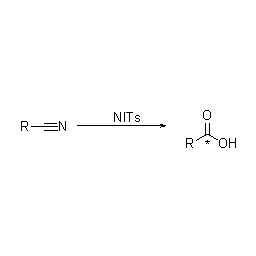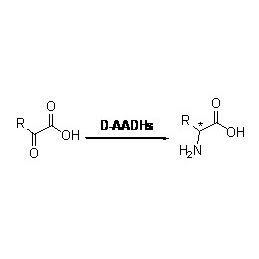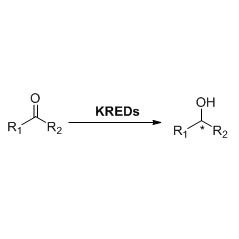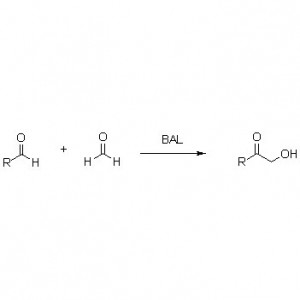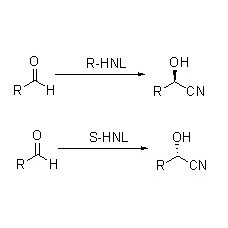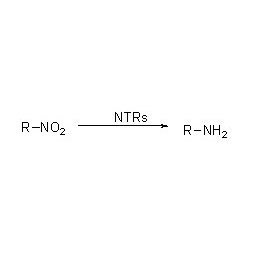Nitrilase (NIT)

| Enzymes | Product Code | Specification |
| Enzyme Powder | ES-NIT-101~ ES-NIT-140 | a set of 40 Nitrilase, 50 mg each 40 items * 50mg / item, or other quantity |
| Screening Kit (SynKit) | ES-NIT-4000 | a set of 40 Nitrilase, 1 mg each 40 items * 1mg / item |
★ High substrate specificity.
★ High conversion.
★ Less by-products.
★ Mild reaction conditions.
★ Environmentally friendly.
➢ Normally, the reaction system should include substrate, buffer solution (optimum reaction pH) and ES-NIT.
➢ All the ES-NITs can be tested respectively in the reaction system above or with the NIT Screening Kit (SynKit NIT).
➢ All kinds of ES-NITs corresponding to various optimum reaction conditions should be studied individually.
➢ High concentration Substrate or product with may inhibit ES-NIT’s activity. However, the inhibition can be relieved by batch addition of substrate.
Example 1(Synthesis of nicotinic acid) (1):

Example 2(Synthesis of (R)-(-)-mandelic acid) (2):
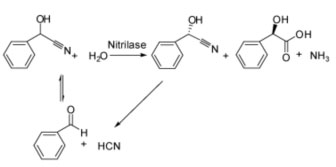
Example 3(Synthesis of baclofen) (3):
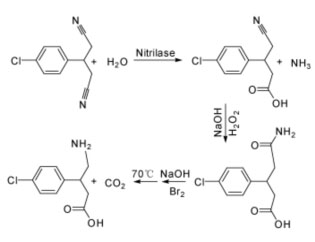
Example 4(Synthesis of glycolic acid) (4):

Keep 2 years below -20℃.
Never contact with extreme conditions such as: high temperature, high/low pH and high concentration organic solvent.
1 Mathew C D, Nagasawa T, Kobayashi M, e tal. Appl. Environ. Microbiol, 1988, 54(4): 1030.
2 Yamamoto K, Oishi K, Fujimatsu I, e tal. Appl. Environ. Microbiol, 1991, 57(10): 3028.
3 Xu M Z, Ren J, Gong J S, e tal. Chin. J. Biotechnol, 2013, 29(1): 31.
4 Wu S, Fogiel A J, Petrillo K L, e tal. Biotechnol. Bioeng., 2008, 99(3): 717.


